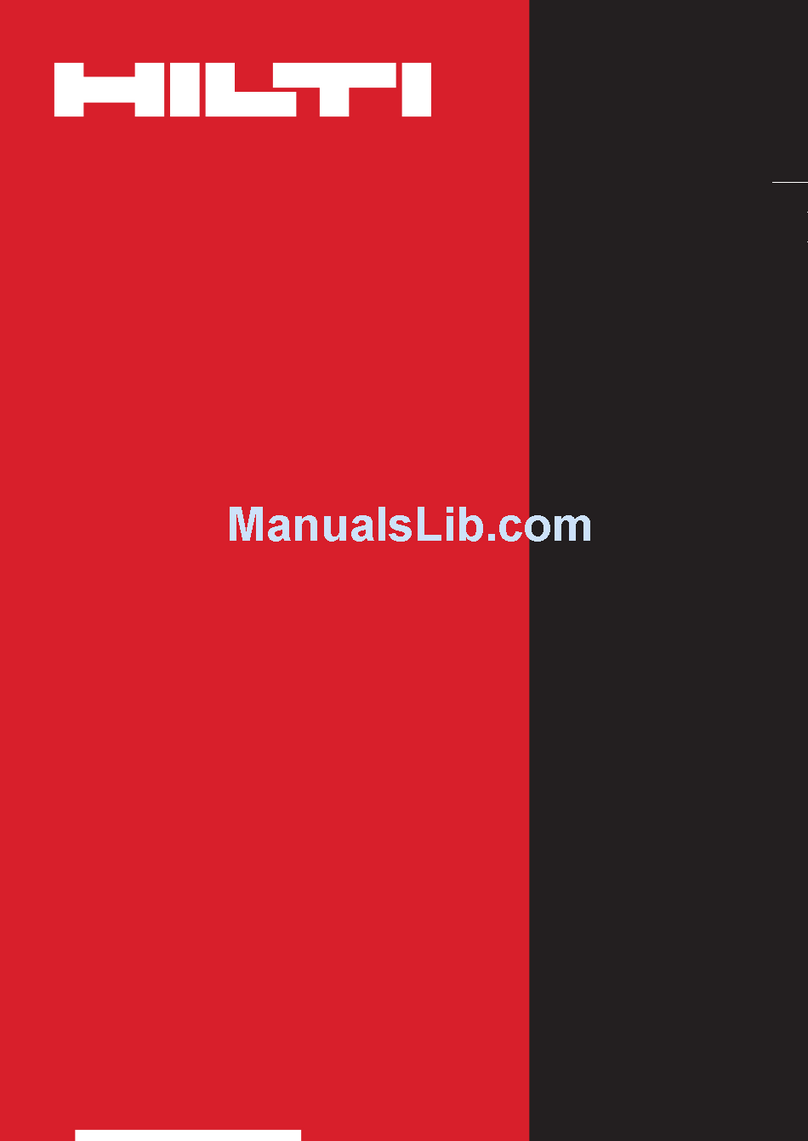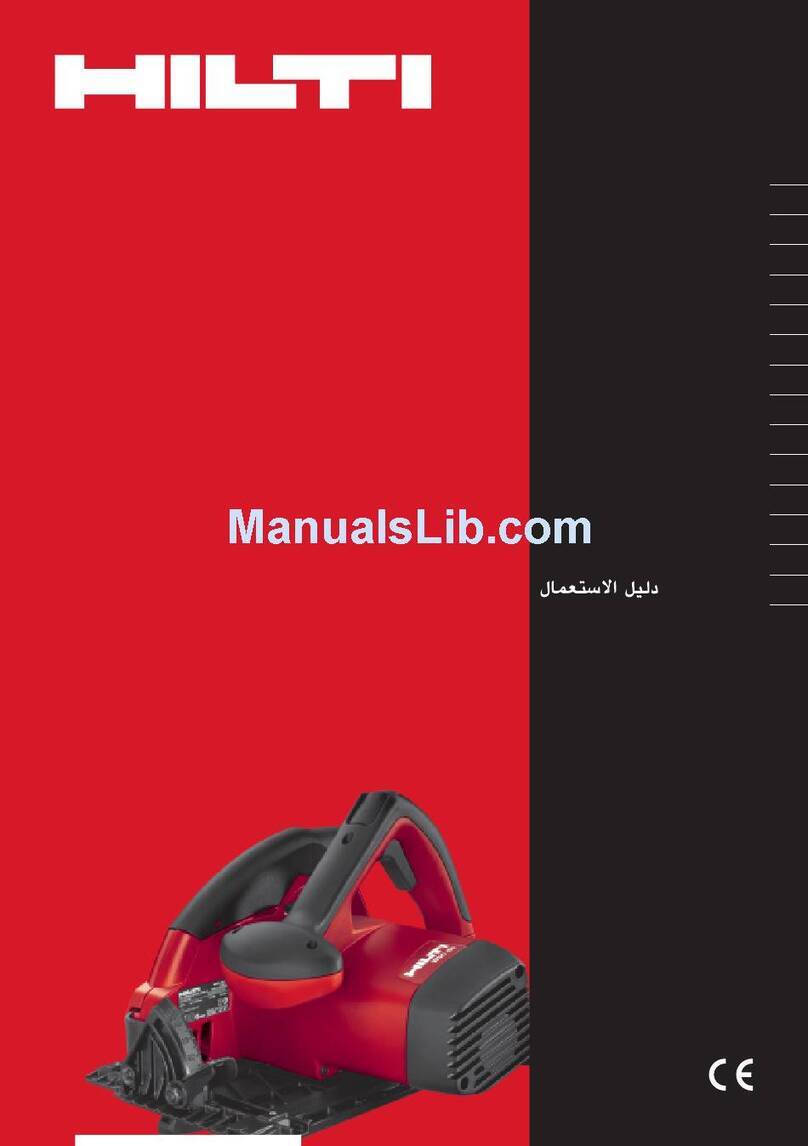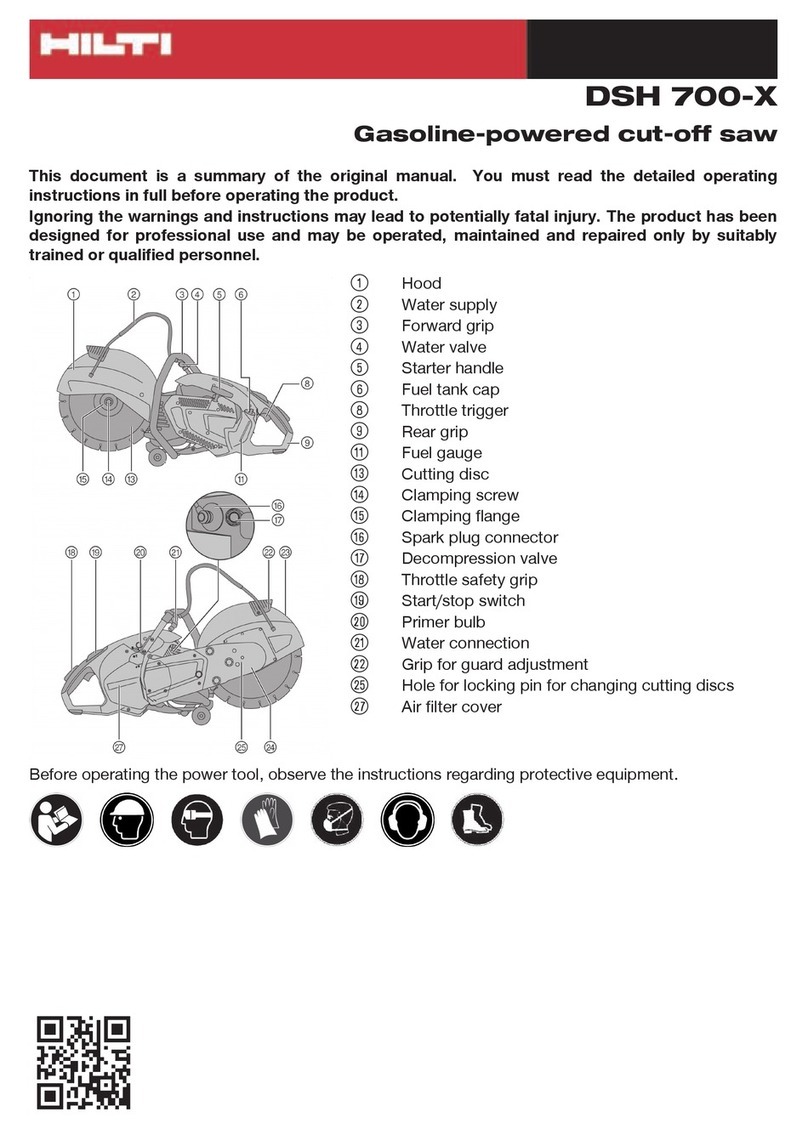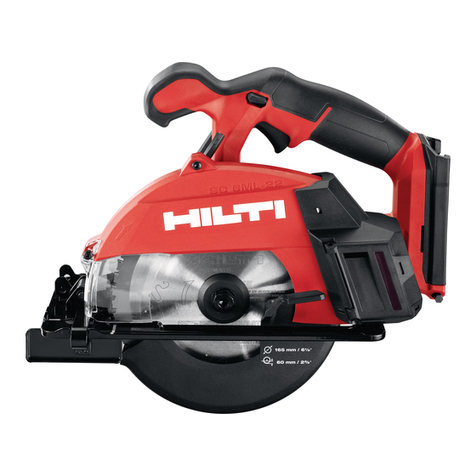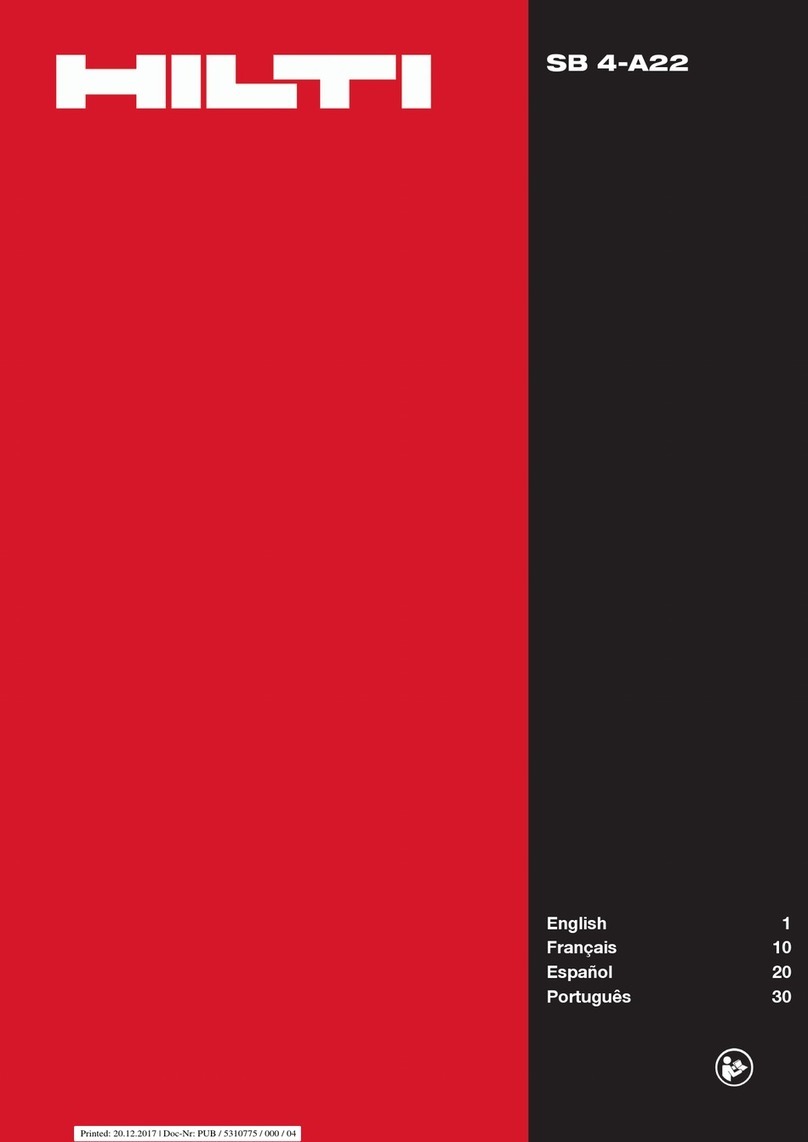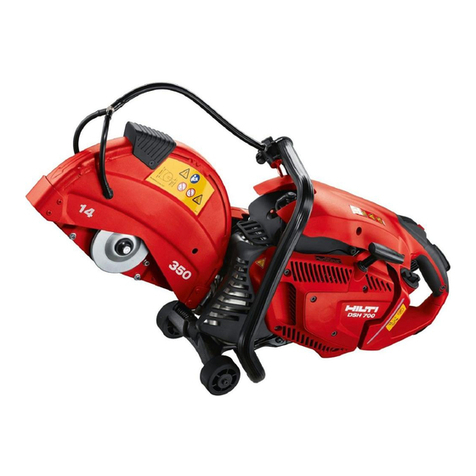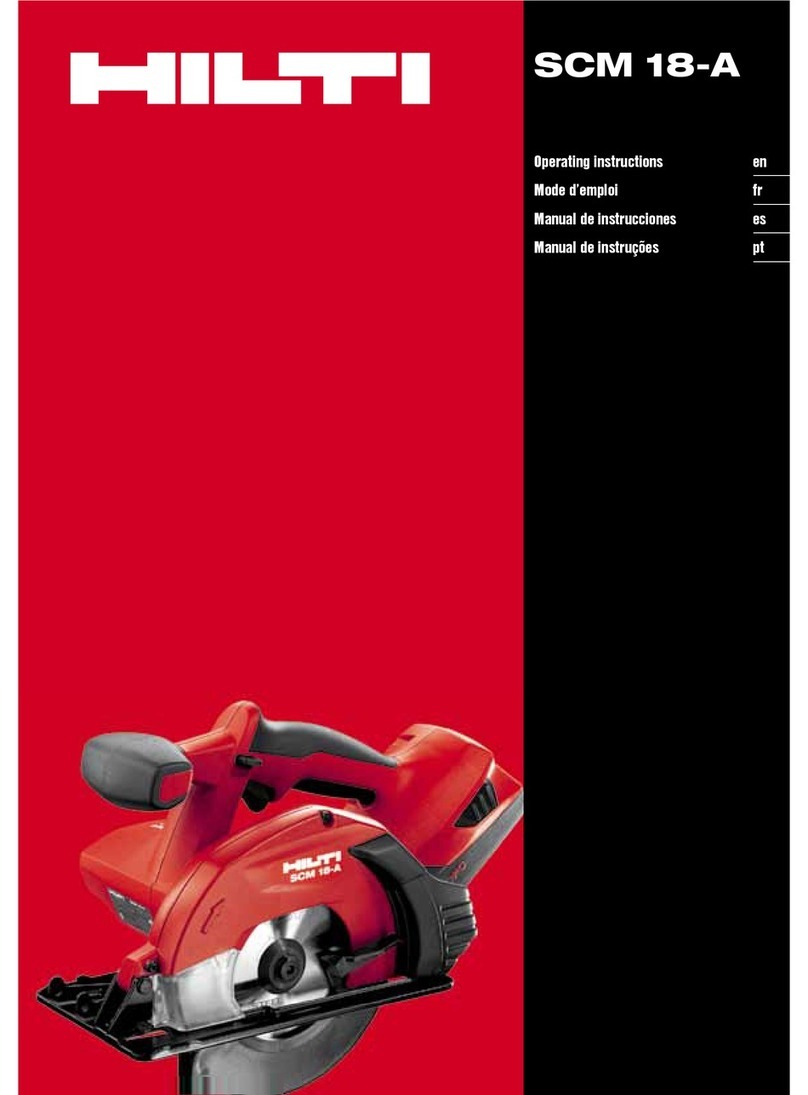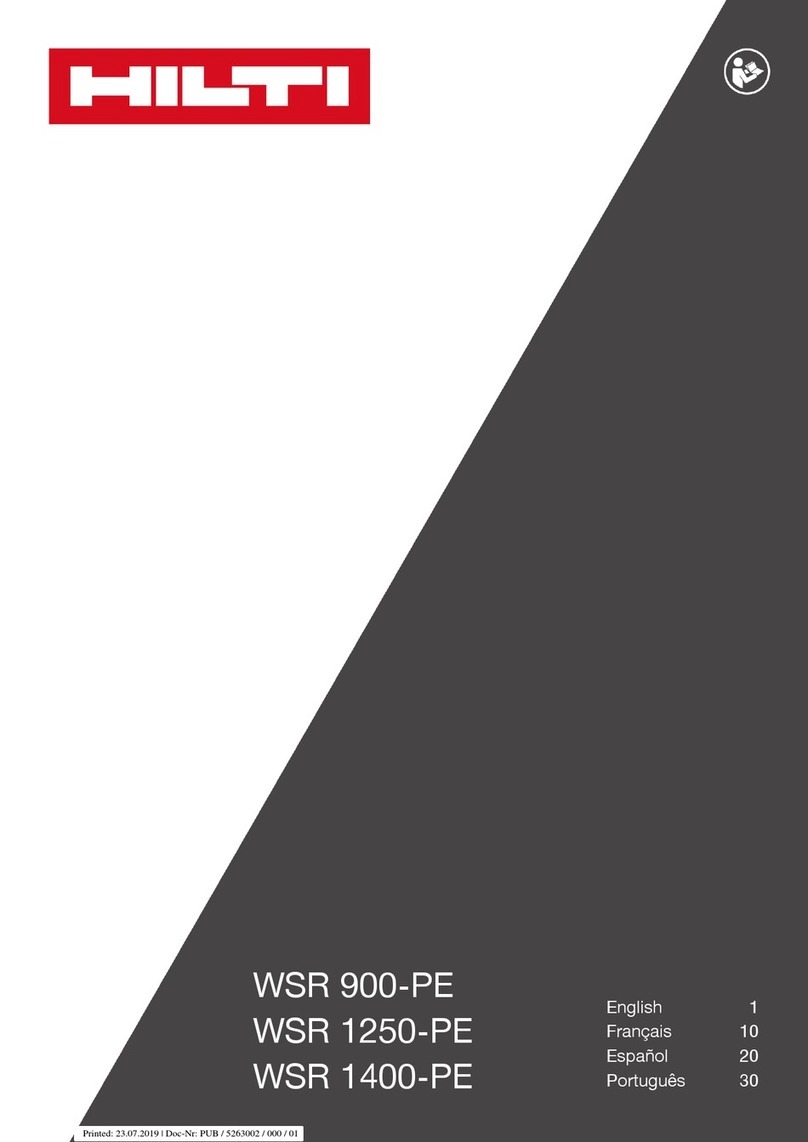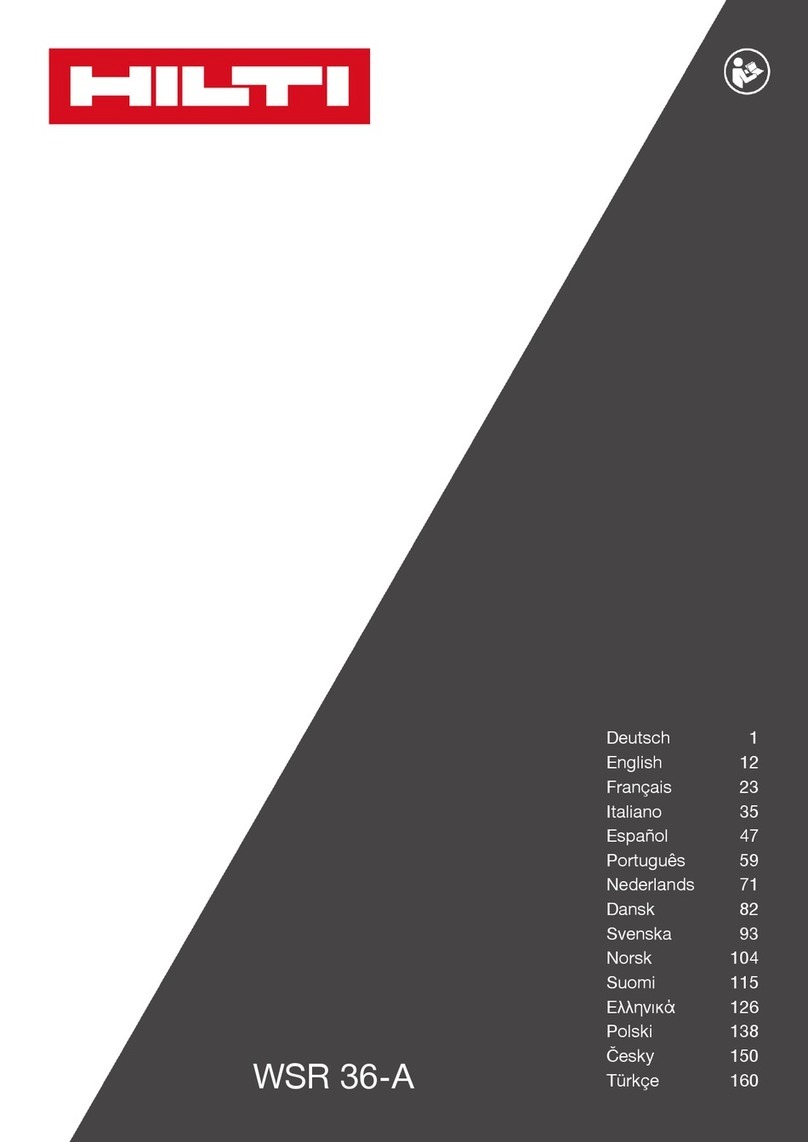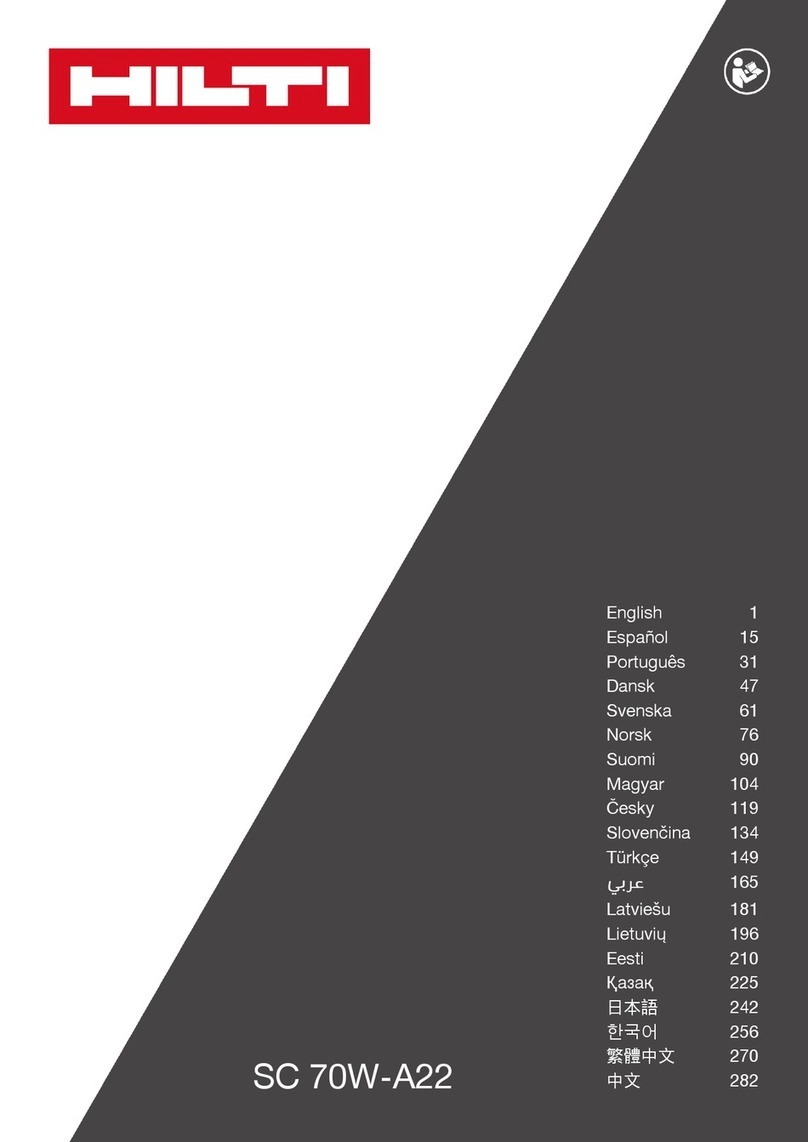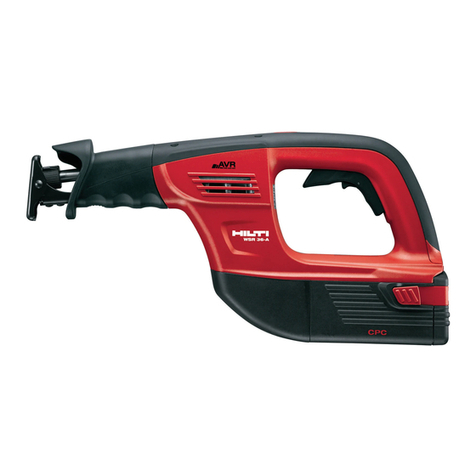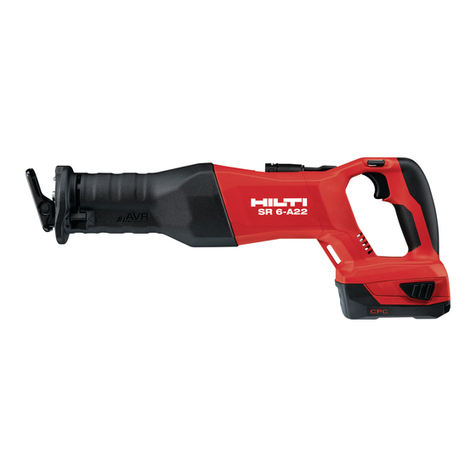
English 3
▶Wear personal protective equipment. Wear safety footwear, protective gloves, a hard
hat and protective glasses.
▶Wear respiratory protection if the work causes dust.
▶Dress properly for the work. Do not wear loose clothing or jewelry as it can be caught
in moving parts. Contain long hair.
▶Keep children away. Keep other persons away from the working area.
▶Do not allow other persons to touch the equipment or the extension cable.
▶Avoid working in awkward body positions. Make sure you work from a safe stance
and stay in balance at all times.
▶To avoid presenting a tripping hazard, always ensure that cables and hoses leading
to the machine are laid flat on the floor.
▶Keep cables and hoses away from rotating parts.
▶In cooperation with the site engineer or architect, check to ensure that no gas, water,
electricity or other supply lines are located in the cutting area. Supply lines located
close to the cutting area which, for instance, could be damaged by falling parts, must
be specially protected and temporarily taken out of operation and switched off where
necessary.
▶Ensure that the cooling water used is drained or extracted in a suitably controlled
manner. Cooling water that is allowed to flow away or spray around in an uncontrolled
manner can lead to damage and accidents. The fact that water can drain away into
internal, hidden cavities must also be taken into account.
▶Don’t work from a ladder.
2.1.2 General safety rules
▶Use the machine only after you have read the operating instructions, after becoming
familiar with the content of the instructions and after receiving training by a Hilti
specialist. Observe all warnings and instructions.
▶Use the right tool or equipment for the job. Do not use the machine for purposes for
which it was not intended. Use it only as directed and when in faultless condition.
▶Use the machine and its accessories etc. in accordance with these instructions and in
the manner intended for the particular type of machine. Take the working conditions
and the work to be performed into account. Use of this machine in situations other
than those intended could result in hazardous situations.
▶Take influences of the surrounding area into account. Do not use the machine where
there is a risk of fire and explosion. Electric tools and machines generate sparks which
may ignite dust or gas.
▶Keep the grips clean, dry and free from oil and grease.
▶Do not overload the machine. It will work more efficiently and more safely within its
intended performance range.
▶Never leave the machine unattended.
▶Store machines in a secure place when not in use. When not in use, machines must
be stored in a dry, high place or locked away out of reach of children.
▶Always disconnect the supply cord from the electric supply when the machine is
not in use (e.g. during breaks between working), before making adjustments, before
cleaning and maintenance and before changing the sawing wire. This safety precaution
prevents the machine being switched on unintentionally.
▶Remove adjusting keys or wrenches before switching the machine on. A tool or a key
left attached to a rotating part of the machine may result in personal injury.
▶Before use, the machine, the sawing wire and accessories must be checked carefully
to ensure that all items function faultlessly and as intended. Check that moving parts
function faultlessly, without sticking, and that no parts are damaged. In order to ensure
